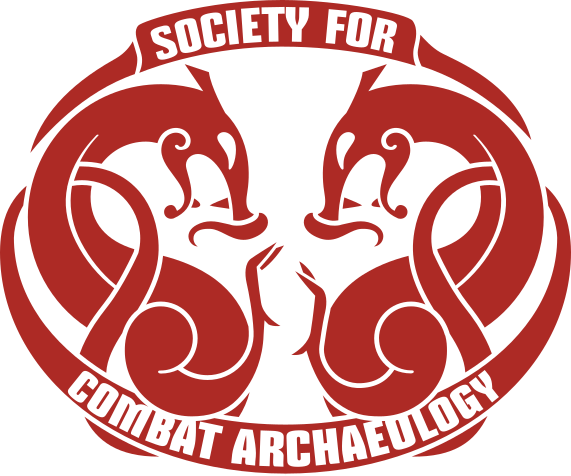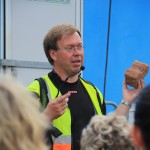Profile
Mission Statement
The Society for Combat Archaeology (SoCA) is an international organization committed to the advancement of knowledge about the nature of combat and conflict in the past in all of their varieties. Our mission is to research, interpret and convey material and issues on the subject of combat and to encourage interdisciplinary interaction between researchers in a variety of fields. To this end, SoCA cooperates extensively with an international network of expertise consisting of persons with academic and practical backgrounds in subjects related to combat, most notably from archaeology and martial arts. SoCA thus draws upon a vast array of sources and critical assessments, which ensure a high level of consideration in the presented material and the maintenance of academic integrity in all its mediums of knowledge.
Trustees

Rolf Warming
Rolf is the founding director of the Society for Combat Archaeology. He holds an MA degree in Maritime Archaeology from the University of Southampton and another MA degree in Prehistoric Archaeology from the University of Copenhagen. His studies have preeminently been on the subject of combat and conflict in the past, ranging from Mesolithic violence to organized state formation in the Renaissance. Rolf has been involved in and driven a number of SoCA projects, such as the interdisciplinary Shields and Hide project (in collaboration with the School of Conservation in Copenhagen, Aarhus University and Moesgaard Museum) and the experimental archaeology project The Viking Shield (in collaboration with Trelleborg Viking Fortress/ National Museum of Denmark).
He is currently a Ph.D. student at the Department of Archaeology and Classical Studies at Stockholm University and an affiliated Ph.D. researcher at the Swedish Defense University. In addition to his academic studies, Rolf has a background as a junior officer in the Royal Danish Army. He is also a martial arts master in Weapons Combat Systems and an instructor in Wing Tsun, teaching classes and seminars on an international level.
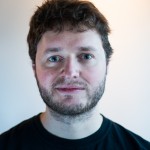
Andreas Hansen
Andreas holds an MD degree from Copenhagen University and is specialized as a chief surgeon (neurology) at Bispebjerg Hospital in Copenhagen. Currently, he is completing the MSc program in Stroke Medicine at the Danube University Krems, Austria. In addition to this, Andreas has trained Wing Tsun, Escrima and historical European martial arts for over a decade and is a senior instructor in Historical Weapons Combat as well as a member of KDF. For the past 6 years, he has been involved in medieval reenactment and full-contact fighting in metal armor.

Jacob Nyborg Andreassen
Jacob is an archaeologist, based in Copenhagen, Denmark. He holds an MA in Prehistoric Archaeology from the University of Copenhagen. His studies have revolved around fortifications and military organisation, particularly as reflected by the many dykes and earthen ramparts scattered across Scandinavia and the war booty sacrifices of the Roman Iron Age. He is currently working at the National Museum of Denmark, producing short films about the Viking Age site of Jelling, Jutland, for school children. One of the focal points of this project is the ringforts of Harold Bluetooth and their significance in the forming of a national state.
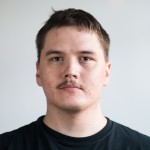
Antti Ijäs
Dr Antti Ijäs is a classical-medieval philologist. His research interests include manuscript studies, book history, and pragmatic literature, especially fight book literature and history of military pedagogy. Antti is the chief instructor of Wing Tsun Finland, an instructor in Weapons Combat Systems and the Regional Head of KDF Finland.

Konrad Kessler
Konrad holds an MA degree in Modern History. He studied in Jena, Germany, and Leiden, Netherlands. He has published several books on castles in Germany and Israel as well as on sword fighting. Lately, Konrad had done a major research project on the weapons in the Schwarzburg Armory. From his childhood on Konrad has been fencing and for the last 20 years focusing on longsword and dagger fighting. He is the Head of the German section of KDF International and a senior instructor in Historical Weapons Combat. He has been teaching at national as well as international events and gives a regular course at the University Sports Centre of the University of Applied Sciences Jena.

Lars Lind
Lars has studied and practiced martial arts for close to 40 years. Together with Sifu Allan Jensen he founded the DEWTO (Danish Escrima and WingTsun Organisation), later changed to EWTO Scandinavia (Escrima and WingTsun Organisation Scandinavia) and now known as WingTsun Scandinavia. In 1982 he started teaching Latosa Escrima under Grandmaster Bill Newmann and Grandmaster Rene Latosa, arranging and attending seminars all over Europe many times a year with both whilst teaching weekly classes of Escrima in Denmark. He has been appointed Head Instructor in Escrima Concepts and has taught seminars for Scandinavian police and military forces. In addition to this, Lars has been an amateur military historian for more than 40 years with main interests in the Medieval and Napoleonic eras and the history of the British army. He has pursued this interest in his martial arts life and has been training with historical European weapons and teaching in historical European martial arts since 1996. He was a founding member of the European Historical Combat Guild and started the very first Chapter of the Guild in Copenhagen under the general direction of John Waller, Head of Interpretation of the Royal Armouries (Leeds). In 2007, Lars founded his own system built on his years of experience in martial arts and interest in history, which combines both the practical and historical side of armed combat, namely Weapons Combat Systems™. Lars holds the rank of Master and Chief Instructor in Weapons Combat Systems and has schools or groups in Denmark, Sweden, Finland, Germany, Netherlands, Mexico and Canada. He is as active as ever and instructs classes and seminars in armed combat and weaponry understanding all over Scandinavia and Europe every month.

Bengt Abrahamsson
Bengt has a martial arts background in Jiujitsu and Wing Tsun and has been training with weapons for over 20 years. He holds the position of regional instructor of Sweden in Weapons Combat Systems and has been teaching classes and seminars in Scandinavia and Europe. He has earned the rank of Chaptermaster in the European Historical Combat Guild, and is a member and Instructor of KDF International. Bengt has a wide ranging interest in different weapons and martial cultures of the past, and an extensive library on the subjects.
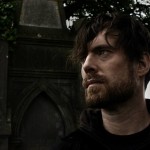
Dave Swift
Dave has worked as a field archaeologist in Ireland since 1999. He lectures regularly all over Ireland at various venues, including OPW (Office of Public Works) sites, at Irish Walled Town Network events and at various Castles and heritage sites across the island, specialising on topics relating to Irish military history c.800-1660 AD. He is the leader of Claíomh, a leading Medieval and Early Modern living history interpretation group. At the moment of writing, Dave is working on reconstructions of 16th century Gaelic Irish targets and sword sheaths, 10th century Hiberno-Norse spears and 14th century European rowel spurs, as well as materials required for the upcoming commemorations in Ireland of the 1916 Rising. Research wise, Dave is also working on the use of crannógs during the Irish Nine Years War (1594-1603).

Thit Birk Petersen
Thit Birk Petersen holds a Mag. Art. degree in Prehistoric Archaeology from the University of Copenhagen and has studied Battlefield and Conflict Archaeology at the University of Glasgow. She has specialized in medieval castles and manipulated landscapes, particularly focusing on the impact of castles on the surrounding landscape, both in war and periods of peace. She has 19 years of experience with experimental archaeology and re-enactment via the Middle Age Centre in Nykøbing F. and is a decent longbow archer. She has participated in gunpowder experiments and longbow experiments. Her current research focuses on the bow from prehistory to the Middle Ages. She is currently employed at Museum Lolland-Falster as an archaeologist, responsible for everything concerning photography at the Femern-project.
Claes B. Pettersson
Claes B. Pettersson is an archaeologist, specialized in the Early Modern Period. He holds a BA in Historic Archaeology from the University of Lund, Sweden. Between 2004 and 2016 he worked for the Jönköping County Museum in Southern Sweden. His research dealt with the conditions that made the rapid development of the Swedish state and its rise as a military power possible in the early 17th century. Excavations led by Claes include both the Royal Manufactures (guns and cloth) and the castle in Jönköping, this once strategically important town. Another project of his is the Getaryggen 1567 battlefield and the Danish campaign led by Daniel Rantzau. Here, excavations and extensive surveys have focused on Scandinavian warfare in the transition between the Middle Ages and the Renaissance, its methods, and the consequences.
Since 2017 he is employed by the Sydsvensk Arkeologi Ltd as project leader, Historical Archaeology. Recent research has been focused on another fortified town, Kristianstad – this time on the other side of the old border between Sweden and Denmark. Claes has published a wide range of articles based on his research and frequently participates in conferences and scientific networks focused on different aspects of conflict archaeology.

Dean Davidson
Dean Davidson has over 20 years of experience in martial arts and training in historical weapons. He is the KDF International Senior Instructor and European Historical Combat Guild Chapter Master at the Royal Armouries, Leeds. Dean regularly presents at international conferences and seminars, most notably the International Medieval Congress, providing a unique insight into the arms and armour used throughout medieval warfare. He is also a founding member of the Towton Battlefield Frei Compagnie and the Creative Director of 3 Swords, a foremost medieval historical and armed combat interpretation group, the presentations of which include museum quality displays of arms and armour for organisations such as the National Archives at Kew, English Heritage and numerous British museums. Dean holds a Masters in Health Informatics from the University of Leeds and is a member of the Leeds University Medieval Society. He frequently runs workshops in historical European martial arts from an array of academic sources throughout the UK.
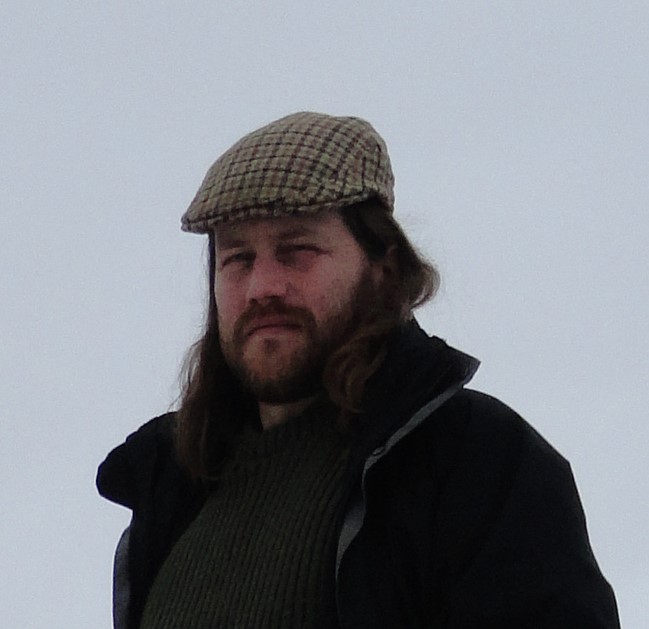
Stuart Ivinson
Stuart has an MA in Medieval History, as well as an MA in Librarianship and a P. Dip in Heritage Management. He has made extensive studies of various aspects of medieval warfare, and has written one book: “Anglo-Welsh Wars, 1050-1300.” Stuart is an assistant teacher at the Leeds chapters of KDF and the European Historical Combat Guild, and has been practicing historical martial arts for sixteen years. He has given numerous demonstrations of historical combat techniques as a member of the Towton Battlefield Society’s Frei Compagnie Living History group, and also the 3 Swords Historical Combat group. Clients for these demonstrations most notably include the Royal Armouries Museum Leeds, The National Archives at Kew, and the Leeds University International Medieval Congress. Stuart works at the Royal Armouries Museum in Leeds, where he is the Librarian. His hobbies include hill walking, reading, and trying to make his numerous replica armours fit and work better.

Xenia Pauli Jensen
Xenia Pauli Jensen holds a PhD degree in Prehistoric Archaeology from the University of Copenhagen. She has specialised in weapons, warfare and cult in Early Iron Age Scandinavia, especially focusing on military, political and religious power structures and how (military) power was visualised in rituals; often (but not always) with a basis in the weapon deposits of Illerup Ådal and Vimose. She is a decent longbow archer with experience in mediating this art to both the public and her peers. Xenia is deeply involved in RoMEC (Roman Military Equipment Conference) – an interdisciplinary research community with contributions from archaeologists, historians and re-enactors. She is currently employed at Moesgaard Museum as head of the research project “Swords and Sword Smiths. Foreign influences in weapon production in Early Iron Age Scandinavia” – a project combining archaeology, metallurgy and reconstruction.
Collaboration Partners
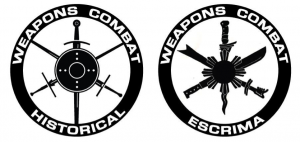
Weapons Combat Systems (WCS)
Weapons Combat Systems (WCS) is a martial arts system consisting of three branches, namely Weapons Combat Escrima, Historical Weapons Combat and Wing Tsun Weapons, each of which emphasizes simplicity and directness in combat. Both weapon situations and unarmed possibilities against an armed or unarmed assailant are taught and trained. Weapons Combat Systems is taught from a set of principles and concepts, rather than techniques, which allows the practitioner to reach a high understanding of armed combat and to adapt more easily to various scenarios based on a core knowledge of body mechanics and weaponry movement as well as the dangers associated with weaponry types.
Kunst Des Fechtens (KDF) is an association of western martial arts clubs that focus on the Liechtenauer tradition and abide by a common set of values in a spirit of cooperation and friendship. The longsword is the main focus of KDF, but, depending on the club and their resources, we also look at messer, dagger, wrestling, sword and buckler, side sword, poleaxe and staff. KDF started in 2006, born from a desire to focus attention on Liechtenauer’s works as well as to bring a dynamic approach to training, adding the use of protection and free play exercises and bouts to drill and practice as a part of trying to triangulate a truth within our interpretations.
Claíomh, meaning ‘sword’ in Irish, is a professional ‘living history’ group portraying late medieval and early modern military life in Ireland to a museum-quality standard. The aspiration of the group is to spread awareness of Ireland’s rich resources of Medieval and Early Modern history and archaeology. Composed of like-minded individuals with backgrounds in, among other things, archaeology and history, the group is continually working on a wide range of reconstructive projects. The group was founded in the late 1990’s by Dave Swift and Marcus Seóighe and was officially registered as ‘Claíomh’ in Ireland in 2001 and currently has members from Dublin, Cork and Galway. Claíomh uses only the highest quality re-constructed artefacts available and many of our reproduced weapons are based upon the unique originals kept in the national collections of both jurisdictions – north and south – on the island of Ireland. Claíomh serves a diverse client-base in various capacities. Events frequently taken on by the membership include corporate events, press releases, private functions, on-site heritage interpretations, parades, clan-rallies, ceremonial guard, in-school/college education and television/film work. Claíomh provides demonstrations as historical/archaeological interpreters and as dramatic stunt-fighters.
Celtic Britain is an international supplier of historical reconstructions and replica’s. They offer a wide variety of product from various era’s and price categories. As Celtic Britain cooperates with more than 20 different craftsmen and have employees trained in (art) history, archaeology and linguistics, they are able to offer specialization and reliability in every field. 50% of their profit is invested in historical research. Celtic Britain originally started as an independent research organization and living history group and are for this reason able to advise museums and government organizations as well as re-enactors and experimental archaeologists.

